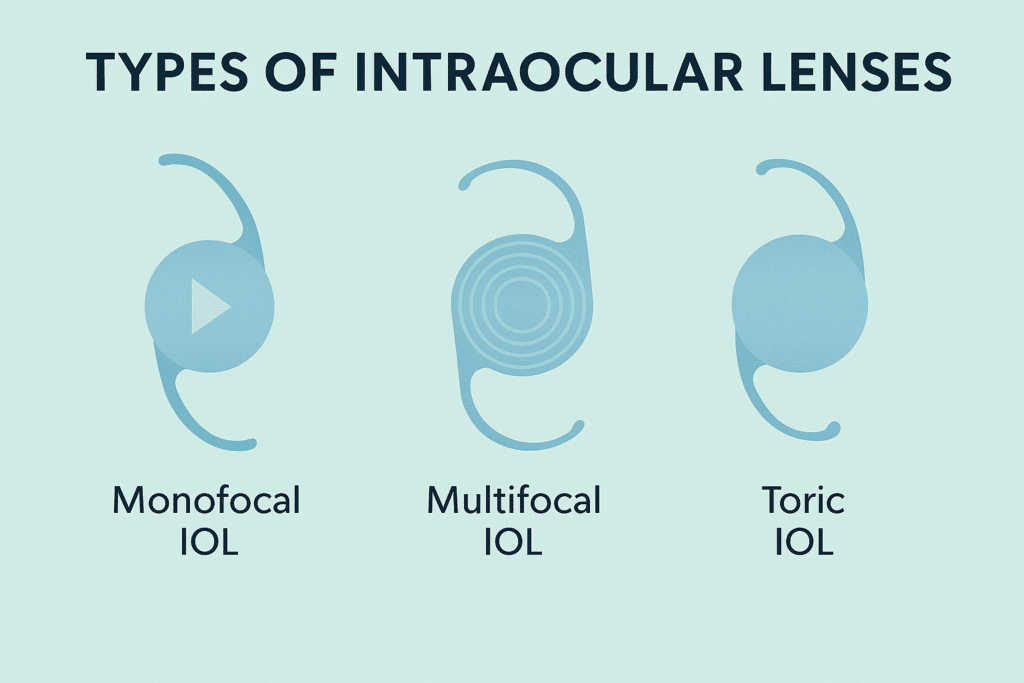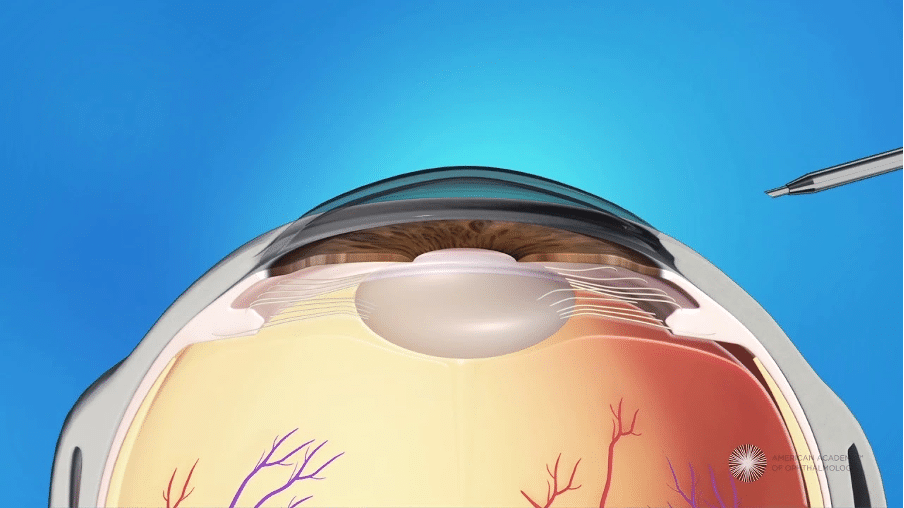Your choice of IOLs (intraocular lenses) during cataract surgery will affect your vision quality afterward. Recent studies show that cataracts affect about 53% of elderly people, so picking the right lens matters a lot.
Doctors use monofocal lenses most often, but these lenses only fix vision at one distance and don’t help with astigmatism. Multifocal IOLs are better at handling near, intermediate, and distance vision all at once [-2]. A 2023 study reveals that patients stayed happy with these lenses even after three years. People with astigmatism might want to look at toric lenses, which are great at fixing this common vision issue [-4].
Picking the right lens goes beyond medical facts – it’s about you. Your daily activities, work life, and vision needs should guide your choice. The results can be amazing – 95% of people don’t need glasses for everyday tasks after getting the right lenses. This piece compares monofocal, multifocal, and toric IOLs to help you pick the best option for your eyes.

Matching IOL Types to Vision Goals
Your visual needs and lifestyle play a key role in choosing the right intraocular lens. Each type of IOL serves different vision goals. Understanding these differences will help you make the best choice.
Distance Clarity: When Monofocal IOLs Are Ideal
Monofocal IOLs give you exceptional clarity and sharpness at one distance, usually far vision. These lenses work best if you love activities like driving, watching TV or enjoying scenic views. Monofocal lenses don’t split light, so you’ll see fewer visual disturbances than with other lens types. These 50-year old lenses let surgeons predict outcomes accurately. Monofocal lenses are a budget-friendly option with superior distance vision quality if you don’t mind using reading glasses for close-up tasks.
All-Distance Vision: Multifocal and Trifocal IOLs
Multifocal and trifocal IOLs are perfect if you want to ditch your glasses. Multifocal lenses use special zones with different powers to create multiple focal points. Trifocal lenses add another focal point for middle-distance vision. This design lets you see clearly at near, middle, and far distances without changing glasses. Studies show 95% of patients don’t need glasses for daily activities after getting these lenses.
Not all intraocular lenses are the same. Whether you want crisp distance vision, freedom from reading glasses, or correction for astigmatism, Precision Vision London offers tailored IOL solutions to match your lifestyle and visual needs.
Astigmatism Correction: Why Toric IOLs May Be Necessary
An irregular cornea curve causes astigmatism, which blurs your vision at every distance. Toric IOLs fix this problem and can correct astigmatism from 1.00D to 6.00D. One in three cataract patients has serious astigmatism. These specialised lenses are crucial for the best possible vision. You can get toric IOLs in both monofocal and multifocal designs to address multiple vision needs at once. The largest longitudinal study shows 85% of patients stay within ±0.50 dioptres of their intended correction. This proves how stable these lenses remain over time.

Visual Performance and Real-World Outcomes
Ground visual outcomes after IOL implantation help set appropriate expectations for your cataract surgery experience.
Night Vision and Halos: Multifocal vs Monofocal
Different IOL types lead to varying post-operative visual phenomena. Monofocal lenses create fewer halos and glare, which makes them perfect for night driving. These lenses deliver crisp single-distance vision with minimal distortion. Multifocal IOLs provide greater freedom from glasses but produce more noticeable halos—reported in 29% of multifocal cases compared to just 8% with monofocal lenses.
Depth Perception and Contrast: What to Expect
Your ability to distinguish objects from their background depends on contrast sensitivity. Monofocal IOLs deliver superior contrast sensitivity, especially when light conditions are poor. Modern trifocal IOLs now match monofocal options with good contrast sensitivity. New enhanced monofocal designs give better intermediate vision while maintaining excellent contrast sensitivity.
Adaptation Period: How Long Does It Take to Adjust?
Neuroadaptation—your brain’s adjustment to new visual input usually takes 3-6 months. Patients gradually adapt to any original visual phenomena like halos or glare during this time. Each patient’s timeline differs. Some adapt within weeks while others need several months. The success rate reaches 90% for multifocal IOLs when patients receive proper support from experienced surgeons.

Factors That Influence IOL Suitability
Your unique situation determines which intraocular lens will work best for you. The right choice depends on your eye health, daily activities, and financial situation.
Pre-existing Eye Conditions: What Limits Your Options
Pre-existing eye conditions affect your IOL options by a lot. Patients with glaucoma or macular degeneration get better results with monofocal IOLs. Multifocal lenses can reduce contrast sensitivity that these conditions have already compromised. People with diabetic retinopathy face higher risks of complications and do better with standard lens options. One in five people undergoing cataract surgery have glaucoma or ocular hypertension. This needs a full picture before surgery. Your cornea’s irregularities also change IOL calculations, which can lead to less predictable outcomes.
Lifestyle and Occupation: Tailoring IOLs to Your Needs
Your daily activities shape which IOL suits you best. A multifocal IOL might work better if you love reading or detailed close-up tasks. People who value distance vision for driving or watching TV often prefer monofocal options. Computer users do well with lenses that excel at intermediate distances. Night drivers need excellent contrast sensitivity with minimal glare. Talk to your surgeon about your vision goals to get the best results after surgery.
Budget and Insurance: Premium Lens vs Standard NHS Options
Money without doubt shapes your IOL choice. The NHS covers standard monofocal lenses, but you’ll need private payment for premium options like multifocal or toric IOLs. Monofocal lenses cost approximately £2,382 per eye, while multifocal lenses range from £1,588-£3,177 per eye. Cost tops the list of factors for many patients, but weigh it against lifestyle benefits and your long-term vision goals.

Why Choose Precision Vision London for Your IOL Surgery
Your surgeon’s expertise and quality of care at your chosen clinic will directly affect your visual outcomes after IOL surgery. Precision Vision London distinguishes itself as a surgeon-led clinic that combines outstanding credentials with a patient-focused approach.
Expert Surgeons with Decades of Experience
Dr. CT Pillai, a world-renowned ophthalmologist, leads Precision Vision London with exceptional surgical expertise. His credentials include over 30 years of specialised experience and more than 50,000 successful laser procedures. A Fellow of the Royal College of Surgeons and a global leader in ophthalmology, Dr. Pillai’s steadfast dedication to state-of-the-art treatments and scientific advancement gives patients the highest standard of care.
Advanced Diagnostic and Surgical Technology
The clinic uses innovative technology exclusively for diagnostics and surgery to achieve precision in every procedure. Precision Vision operates independently without manufacturer ties, which allows surgeons to select the most suitable IOLs for each patient. This independence means you get lenses based purely on your visual needs rather than commercial relationships.
Personalised Consultations and Aftercare
Your experience starts with Precision Vision’s highly trained patient coordinators. A detailed consultation follows to assess your specific needs. The clinic provides complete one-year aftercare support throughout your recovery. Book your consultation today and let our surgeons help you choose the right lens for your eyes.
Trusted by Thousands Across the UK
Patient testimonials consistently showcase excellent results, with many patients achieving 20/20 vision. The clinic maintains an impressive 4.97/5 rating based on 166 verified reviews, which reflects outstanding patient satisfaction. Many patients travel from all parts of the UK to benefit from Precision Vision London’s renowned surgical expertise.
Conclusion
Your long-term vision health depends on picking the right intraocular lens. Each IOL type comes with its own benefits. Monofocal lenses give you excellent distance clarity with minimal visual issues. Multifocal options help you see clearly at different distances without glasses. Toric lenses are designed to fix astigmatism problems. Your lifestyle needs and current eye health are vital factors that help determine which lens will work best for you.
The time needed to adjust varies based on your lens choice. Most patients get used to their new lenses within a few months. Your brain needs time to adapt to the new way you see things, especially with multifocal lenses. You’ll need some patience during this adjustment period. Money plays a role in choosing your lens. Premium lenses cost more than what the NHS covers. Many patients think the extra cost is worth it because they don’t need glasses anymore. Let your vision needs guide your choice rather than just the price.
Precision Vision London stands out by combining excellent surgery, innovative technology, and personal care. Dr. CT Pillai and the team look at your vision needs, eye health, and lifestyle to suggest the best IOL for you. The clinic’s independence means they choose lenses based on what’s best for your eyes, not business deals. The clinic’s 4.97/5 patient satisfaction rating shows their outstanding results. On top of that, their detailed aftercare programme supports you throughout your recovery to ensure the best outcome.
The right IOL can change how you see the world after cataract surgery. This is true whether you want sharp distance vision, freedom from reading glasses, or astigmatism correction. Expert guidance from Precision Vision London’s top surgeons helps you face your procedure with confidence. Your vision goals remain their main focus.
FAQs
Q1. What are the main differences between monofocal, multifocal, and toric IOLs? Monofocal IOLs provide clear vision at a single distance, typically far vision. Multifocal IOLs offer vision at multiple distances (near, intermediate, and far), reducing dependence on glasses. Toric IOLs are designed to correct astigmatism alongside addressing other vision issues.
Q2. How long does it typically take to adapt to new intraocular lenses? The adaptation period usually ranges from 3 to 6 months, with most patients adjusting within this timeframe. However, individual experiences can vary, with some adapting within weeks while others may require several months for full adjustment.
Q3. Are premium IOLs covered by the NHS? Standard monofocal IOLs are typically covered by the NHS. However, premium options like multifocal or toric IOLs generally require private payment. It’s important to discuss the costs and benefits with your surgeon to determine the best option for your needs and budget.
Q4. How do different IOLs affect night vision and glare? Monofocal IOLs generally cause fewer visual disturbances like halos and glare, making them excellent for night driving. Multifocal IOLs, while offering greater spectacle independence, may produce more noticeable halos, reported in about 29% of cases compared to 8% with monofocal lenses.
Q5. What factors should I consider when choosing an IOL? Key factors include your lifestyle and occupation, pre-existing eye conditions, desired level of glasses independence, budget, and specific vision goals. It’s crucial to discuss these factors with your surgeon to determine the most suitable IOL for your individual needs.
Authors & Reviewer
-
 Olivia: Author
Olivia: AuthorHi, I'm Olivia, a passionate writer specialising in eye care, vision health, and the latest advancements in optometry. I strive to craft informative and engaging articles that help readers make informed decisions about their eye health. With a keen eye for detail and a commitment to delivering accurate, research-backed content, I aim to educate and inspire through every piece I write.
-
 Dr. CT Pillai: Reviewer
Dr. CT Pillai: ReviewerDr. CT Pillai is a globally recognised ophthalmologist with over 30 years of experience, specialising in refractive surgery and general ophthalmology. Renowned for performing over 50,000 successful laser procedures.

